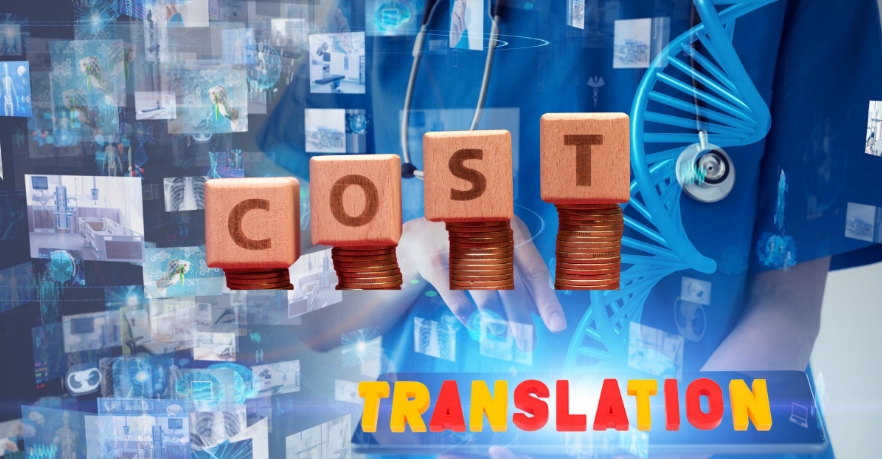
In an increasingly globalized market, effective communication in the pharmaceutical and medical device sectors is more critical than ever. Accurate medical translation is essential for ensuring that healthcare professionals, regulatory bodies, and patients receive precise information about products, usage instructions, and safety guidelines, regardless of language barriers. However, poor translations can lead to severe repercussions, including regulatory non-compliance, patient safety risks, and significant financial losses.
This article delves into the hidden costs associated with inadequate medical translation, highlighting how these costs can affect product approval, legal liabilities, and overall operational efficiency. Investing in high-quality translation services is not just a matter of compliance; it is crucial for safeguarding patient safety and promoting effective healthcare delivery. Engaging professional translators with expertise in the pharmaceutical and medical device fields can significantly mitigate the risks associated with miscommunication, ensuring that all documentation is accurately translated and fostering trust among stakeholders.
Poor translation can have far-reaching consequences that extend well beyond simple misunderstandings. From regulatory compliance issues to potential legal liabilities, the costs associated with inadequate translations can significantly impact a company's bottom line and reputation. This section explores the various cost items:
Poor translation can lead to significant regulatory compliance issues. Misinterpretation of critical regulatory documents may result in non-compliance, which can attract fines and penalties from regulatory bodies.
Additionally, inaccuracies in translation can delay product approvals, causing companies to miss market opportunities and potentially leading to substantial financial losses.
Inaccurate translations on product labels or instruction manuals can necessitate product recalls. Such recalls not only incur substantial costs related to logistics and consumer notification but also involve reputational damage that can impact customer trust. The need for repackaging and redistributing products further adds to the financial burden.
Translation errors can result in legal liabilities, particularly if patients receive incorrect information about product use or safety. This may lead to lawsuits against the company, incurring significant legal fees and potential settlements.
Additionally, companies may face increased insurance premiums due to heightened risk exposure, further straining financial resources.
Delays in entering new markets due to translation issues can lead to lost sales opportunities. If products cannot be marketed effectively due to language barriers, companies may miss out on revenue that could have been generated in high-demand regions.
Additionally, poor translation can hinder effective marketing strategies, resulting in a competitive disadvantage in the marketplace.
Mistakes in translation can severely damage a company’s reputation, leading to negative publicity and a loss of customer trust. When healthcare professionals and patients perceive a company as unreliable due to poor communication, it can lead to customer attrition and a significant decline in brand loyalty. Rebuilding a tarnished reputation can take considerable time and resources.
The need to correct translation errors can lead to increased operational costs. Time and resources spent on rework and revisions divert attention from other critical business functions.
Additionally, companies may need to invest in further training for staff to ensure compliance with translation standards and best practices, adding to the overall operational burden.
Ultimately, poor translations can adversely affect patient outcomes. If patients misunderstand product usage due to unclear instructions, it can lead to improper use and potential health risks. This not only compromises patient safety but can also result in additional costs for healthcare systems due to complications arising from miscommunication.
To avoid poor medical translations, companies can implement several best practices:
Qualifications: Hire translators with specialized training in medical and pharmaceutical terminology. Look for professionals with certifications in medical translation.
Experience: Choose translators who have a proven track record in the industry, ideally with experience in regulatory submissions and clinical documentation.
Streamlined Process: Implement a TMS to manage translation projects efficiently. This software can help with consistency, version control, and collaboration among team members.
Glossaries and Databases: Create and maintain terminology databases and glossaries specific to your products to ensure uniformity across translations.
Review Processes: Establish a multi-step review process that includes proofreading and editing by native speakers and subject matter experts.
Back-Translation: Use back-translation (translating the text back to the source language) to verify accuracy and clarity.
Ongoing Education: Provide regular training for translators on the latest developments in medical and pharmaceutical regulations, terminology, and standards.
Feedback Mechanism: Create a system for ongoing feedback from users of translated materials to identify and address issues promptly.
Regulatory Guidelines: Ensure that all translations adhere to local and international regulatory requirements for labeling, marketing, and patient information.
Audit Trails: Maintain documentation of translation processes and decisions to support compliance and accountability.
Cross-Departmental Communication: Foster collaboration between translation teams, regulatory affairs, marketing, and R&D to ensure that all stakeholders are aligned on terminology and messaging.
Project Kickoff Meetings: Hold kickoff meetings for major projects to clarify objectives, expectations, and key terminology.
Translation Memory (TM): Leverage TM tools to store previously translated content, ensuring consistency and reducing the time needed for future projects.
AI and Machine Translation: Consider using AI-assisted translation tools, but always complement them with human review to ensure accuracy.
Performance Metrics: Establish metrics to evaluate the quality and efficiency of translation services, such as turnaround times and error rates.
Continuous Improvement: Regularly review and refine translation processes based on performance data and feedback.
By implementing these strategies, life science enterprises can significantly reduce the risk of poor translations, ensuring that their communications are accurate, compliant, and effective.
In conclusion, the hidden costs of poor translations in the pharmaceutical and medical device sectors underscore the critical importance of investing in high-quality translation services. As these industries navigate complex regulatory landscapes and strive to maintain patient safety, ensuring accurate and clear communication is essential. By prioritizing professional translation and implementing robust quality assurance processes, companies can mitigate risks, protect their reputation, and ultimately enhance their operational efficiency. The commitment to precise translation not only safeguards financial investments but also fosters trust among healthcare professionals and patients alike, paving the way for successful market engagement and long-term growth.